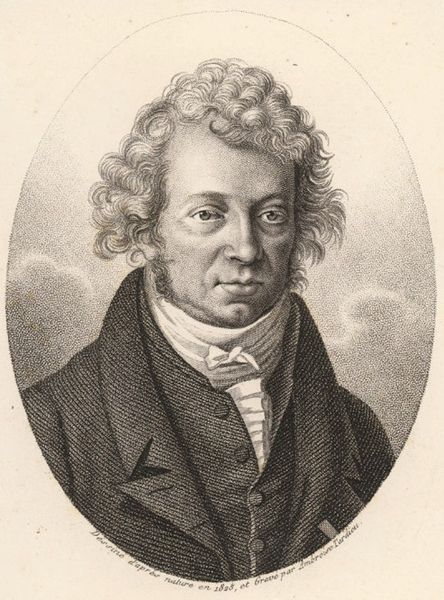Laser gain curve Created 2024-06-26 Updated 2025-07-16
Laser linewidth Created 2024-06-26 Updated 2025-07-16
Laser linewidth - measurement and explanation by Your Favourite TA
. Source. Breakup of the Bell System Created 2024-06-26 Updated 2025-07-16
Artificial intelligence paradigm Created 2024-06-26 Updated 2025-07-16
Magnetic core Created 2024-06-26 Updated 2025-07-16
UNSW Physics YouTube channel Created 2024-06-26 Updated 2025-07-16
Philosophy of education of Rousseau Created 2024-06-26 Updated 2025-07-16
Notion (productivity software) Created 2024-06-26 Updated 2025-07-16
- they have a separate DB entry for everything in the page, e.g. even list items. A little bit like OurBigBook dynamic tree but way more blocks
- they use PostgreSQL of course
LED spectrum Created 2024-06-26 Updated 2025-07-16
Type of laser Created 2024-06-26 Updated 2025-07-16
Lasers vs other light sources Created 2024-06-26 Updated 2025-07-16
The key advantages of lasers over other light sources are:
- lasers emit a narrow spectrum
- it can be efficient collimated, while still emitting a lot of output power: Section "Why can't you collimate incoherent light as well as a laser?"
- can be phase and polarization coherent, though it is not always the case? TODO.
One cool thing about lasers is that they rely on one specific atomic energy level transition to produce light. This is why they are able to to be so monchromatic. Compare this to:As such, lasers manage to largely overcome "temperature distribution-like" effects that create wider wave spectrum
- incandescent bulbs: wide black-body radiation spectrum
- LED: has a wider spectrum fundamentally related to an energy distribution, related: Why aren't LEDs monochromatic
- TODO think a bit about fluorescent lamps. These also rely on atomic energy transitions, but many of them are present at once, which makes the spectrum very noisy. But would individual lines be very narrow?
Crazy difference between 5W laser and 5W LED by Brainiac75
. Source. Baseic but good. Uses a laser photometer. Laser spectrum Created 2024-06-26 Updated 2025-07-16
Twisted pair Created 2024-06-26 Updated 2025-07-16
Education of André-Marie Ampère Created 2024-06-26 Updated 2025-07-16
en.wikipedia.org/w/index.php?title=Andr%C3%A9-Marie_Amp%C3%A8re&oldid=1211946256:TODO find the source for this.
Jean-Jacques Ampère, a successful merchant, was an admirer of the philosophy of Jean-Jacques Rousseau, whose theories of education (as outlined in his treatise Émile) were the basis of Ampère's education. Rousseau believed that young boys should avoid formal schooling and pursue instead a "direct education from nature." Ampère's father actualized this ideal by allowing his son to educate himself within the walls of his well-stocked library.
André-Marie Ampère Created 2024-06-26 Updated 2025-07-16
Electrical cable Created 2024-06-26 Updated 2025-07-16
One more more electrical wires surrounded by an insulator.
Oliver Heaviside Created 2024-06-26 Updated 2025-07-16
He participated in the development of the electrical telegraph, and he did some good modeling work that improved the foundations of the field, notably creating the telegrapher's equations.
He was one of those idealists who just want to do some cool work even if they have to starve for it, people had to get a state pension for him for his contributions. Nice guy. en.wikipedia.org/w/index.php?title=Oliver_Heaviside&oldid=1230097796#Later_years_and_views:He also never married: www.nndb.com/people/627/000204015/
In 1896, FitzGerald and John Perry obtained a civil list pension of £120 per year for Heaviside, who was now living in Devon, and persuaded him to accept it, after he had rejected other charitable offers from the Royal Society.
CIA 2010 covert communication websites 2013 DNS census secureserver.net MX records intersection 2013 DNS Census virtual host cleanup Created 2023-07-19 Updated 2025-07-16
We intersect 2013 DNS Census virtual host cleanup with 2013 DNS census MX records and that leaves 460k hits. We did lose a third on the the MX records as of 260 hits since secureserver.net is only used in 1/3 of sites, but we also concentrate 9x, so it may be worth it.
We did a full Wayback Machine CDX scanning for JAR, SWF and cgi-bin in those, but only found a single new hit:
- 63.130.160.50 theglobalheadlines.com. Just barely missed with our 2013 DNS Census virtual host cleanup heuristic keyword searches as we did think of both "global" and "headlines" in the "news" themes!
IBM 2017 beryllium hydride ground state calculation on a quantum computer Updated 2025-07-16
Abelian anyon Updated 2025-07-16
Key physical experiment: fractional quantum Hall effect.
There are unlisted articles, also show them or only show them.


